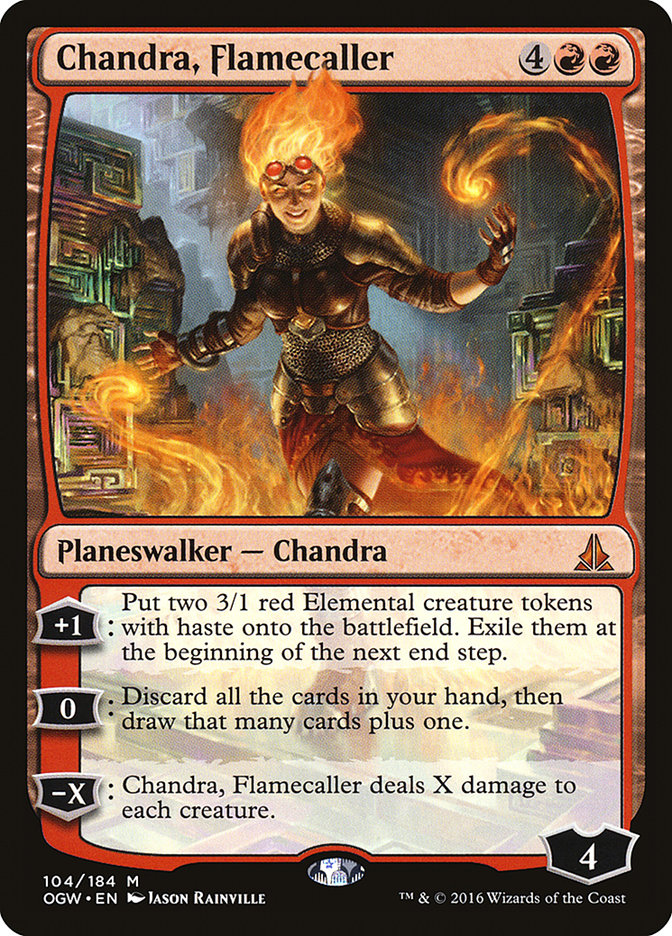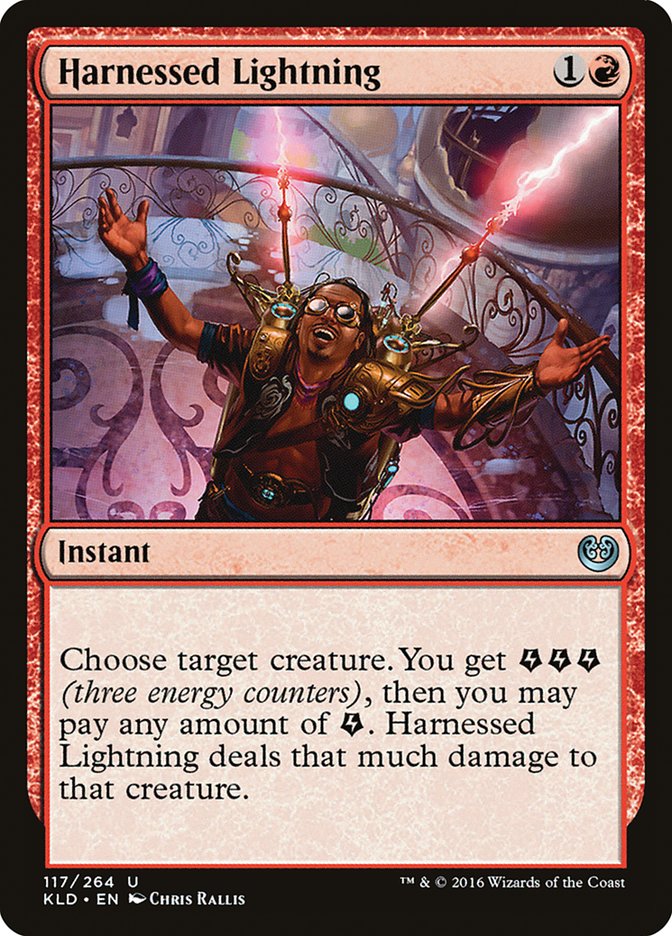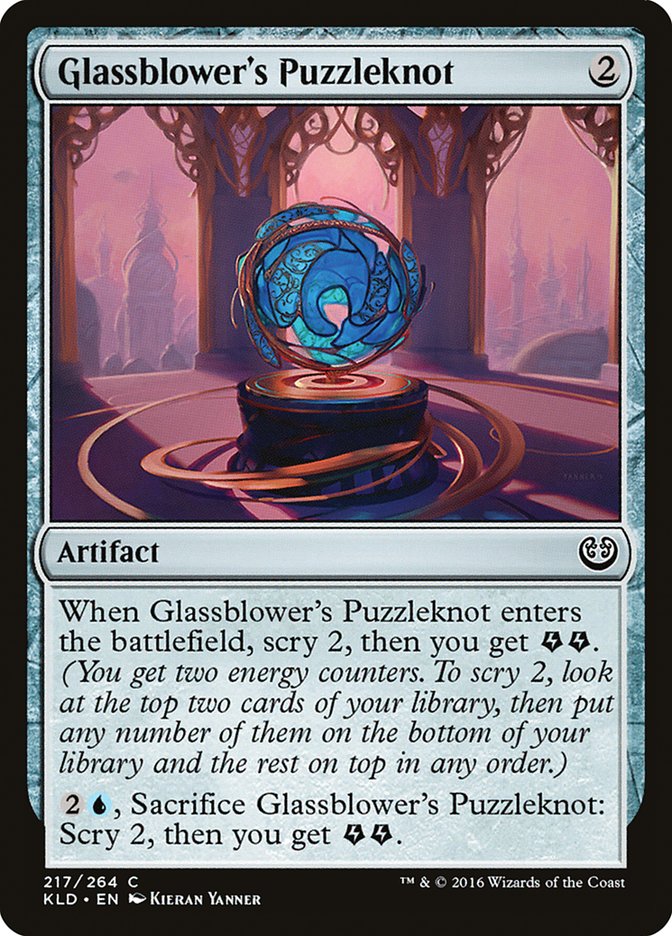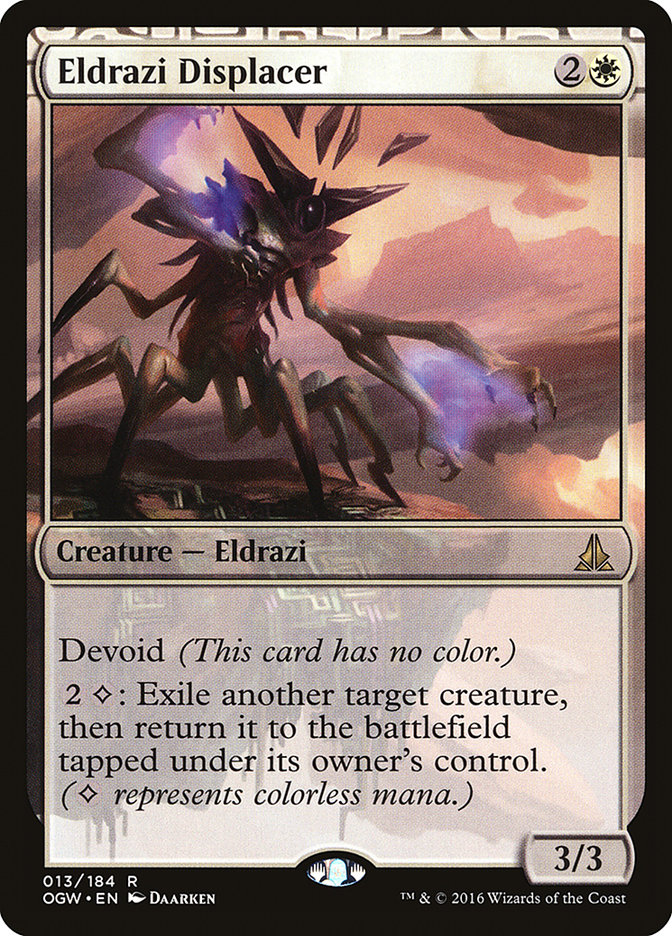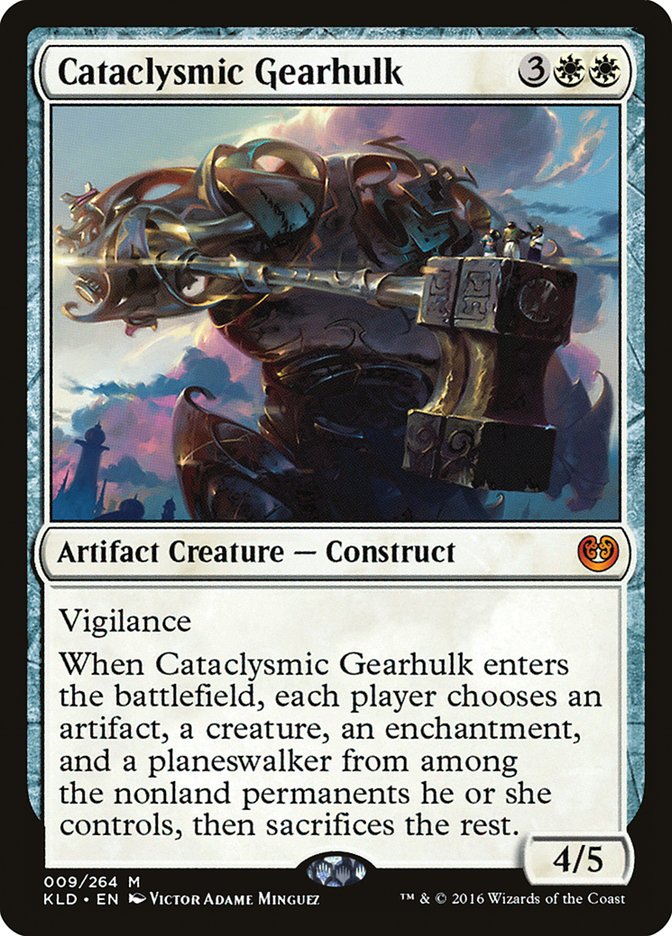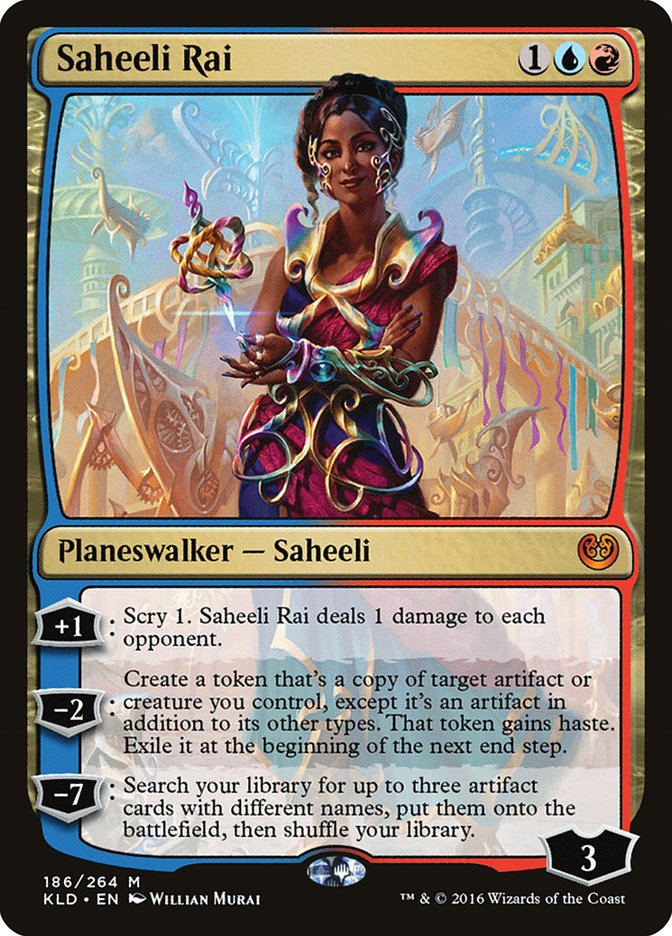I’ve noticed lately that the way I approach spoiler season is formulaic. I’ll spend anywhere from two to four weeks hammering my audience with decklists that intrigue me. In particular, I love trying to push the new cards, mechanics, and themes that interest me – especially in the last few blocks, where Wizards has done an awesome job of designing sets that are brimming with “build-around-me” cards.
I’ve also noticed lately that many of those that surround me, including content producers, tend to take a different approach. “Not enough of the set has been spoiled” and “Why would you build something that feels like it’s missing a piece?” tend to be normal answers whenever I ask why no one is building decks.
I simply don’t understand this. I’ll do my best to ignore my clear bias of the fact that I enjoy it (my desktop is constantly cluttered with Notepad files and my phone has more than 300 notes over the last year) and instead focus on why I think it is important that folks become more focused on this aspect of Magic, particularly from a competitive standpoint.
A few months ago I wrote out my concise thoughts on playtesting, including a subsection on preparing for new formats. Specifically, I want to highlight the notion that there is nothing wrong with building bad decks.
Deckbuilding itself is a skill that can be cultivated through repetition. Getting used to the idea of creating a configuration of cards that makes sense on a variety of different spectrums – balancing mana curves, enablers, payoffs, proper threats, answers, and a functional manabase is extremely difficult! This is especially true when Magic is so dynamic and new cards and strategies are constantly being injected into the game.
As a result, there’s no real reason to wait for that perfect idea to come or all the cards to be released. Just start playing Magic! If you think a new card is sweet or that you have an interesting idea, put it on paper and start getting to the games. I always find the idea of taking a default stance that something new is “bad” or “worse” is absurd. If you have an inkling that a card that is clearly knocking on Constructed power level, is worth putting into a deck or building around, then do it.
Here’s the secret: new Magic cards are always going to be good. Why would Wizards put so much effort into making a vibrant and flavorful world if none of the cards were worth playing with? Creating an exciting game that creates demand is the backbone of Magic’s growth and success. So, you know why I’m so interested in Energy? Because it is cool and unique, and I truly believe that it will be an integral part of Standard. If R&D has done its job, and I believe they have, it’s simply up to us to figure out how to complete the puzzle.
I spoke about this specifically in my playtesting article, but I think it’s worth reiterating: early decks should never be about the 75. Playing with new cards is about learning and exploration. Getting an understanding for how the texture of the format may evolve and the powerful new cards that will define the format is what it is important. Your deck might be built horribly, but if you can learn that one card or interaction is good from a session, then you’ve discovered something significant that can be further built upon.
Change your decks aggressively and often to try to address the issues that you see. If a card is overperforming but the shell that you’ve constructed doesn’t properly support the card or strategy, then start over using what you’ve learned. I oftentimes find that the best way to begin is to try to push my concept as hard as possible, even at times ignoring “accepted truths” like playing with the obvious removal spells or disruptive elements. Discovering whether your strategy works and is worth exploring further is a lot more important in the early stages of testing new formats. Once you have your proof of concept, you can then finally start to properly tune, trimming the unnecessary fat and focusing on the powerful core elements of your new deck.
So now that my tangent is over, it’s only fitting that I get to some decks.
Here’s what I’m looking at right now for Temur Energy:
Creatures (14)
- 4 Sylvan Advocate
- 3 Tireless Tracker
- 2 Emrakul, the Promised End
- 1 Ishkanah, Grafwidow
- 2 Multiform Wonder
- 2 Bristling Hydra
Planeswalkers (4)
Lands (23)
Spells (19)

For starters, I feel confident in saying that Aether Hub will be one of the important cards in Kaladesh. Tendo Ice Bridge was nothing to scoff at it in its day and Aether Hub accomplishes quite a few things in addition to being a “functional” reprint. The first is that Aether Hub is a repeatable source of mana fixing in the decks that support Energy with little to no cost. The second is that an Aether Hub alongside a functional mana draw is a free source of Energy. Finally, Aether Hub is critically a colorless land, of which there were precious few left after the rotation of painlands.
This is going to be the backbone of fixing for many decks.
I also want to quickly note that Chandra, Torch of Defiance was spoiled shortly after I submitted my article last week. This card is very good, even great, but I have a different opinion on it from most. It would be reasonable to assume that many would suggest replacing Chandra, Flamecaller in Temur Energy for her new and exciting and cheaper iteration, but I disagree. Chandra, Torch of Defiance is a powerful card on-curve for checking an opponent’s battlefield of low-toughness creatures and generating some card advantage.
Even more than that, I think her “best” ability is actually her +RR mana ability, which will be capable of generating tempo the turn she enters the battlefield before surging her controller on the fifth turn.
That said, Chandra, Flamecaller is a powerful win condition that serves as a sweeper and means to quickly rip through your deck and easily enable Aetherworks Marvel to activate every turn while also pressuring opposing planeswalkers. This is a dramatically different toolkit of abilities from her aggressively slanted identity.
Otherwise, it’s worth noting that Harnessed Lightning is another of the most exciting cards in the set to me. It is a scaling removal spell that can trade way up in addition to fighting cards on-curve while generating another tangible resource as a bonus, huge implications from a two-mana card.
Glassblower’s Puzzleknot is another interesting Energy enabler that is a bit more flexible than its green counterpart. It still isn’t even clear that these cards are what we are interested in doing, as they can be a bit low-impact, but scry 2 is a lot more powerful than it appears on the surface. Of course, Woodweaver’s Puzzleknot is much better at actually generating Energy, but what’s the point of having a huge surplus if we haven’t found Aetherworks Marvel?
Creatures (18)
- 4 Eldrazi Displacer
- 4 Sylvan Advocate
- 3 Archangel Avacyn
- 1 Ishkanah, Grafwidow
- 3 Selfless Spirit
- 2 Verdurous Gearhulk
- 1 Cataclysmic Gearhulk
Planeswalkers (4)
Lands (24)
Spells (14)

I covered this deck to some small extent last week but have since tightened it up considerably. G/W is a perfect example of a deck that is heavily impacted by Aether Hub despite the fact that this isn’t an Energy deck. It is often the case that G/W simply needs a little bit of help with mana fixing for a single turn to play on-curve, and Aether Hub does just that while also being an excellent enabler for Eldrazi Displacer.
Eldrazi Displacer is such a disgusting card right now. There are an incredible number of powerful five-mana creatures in this color combination, and despite having a bit of a toolbox here, there are still two or three other cards that are arguably worthy of slots. Verdurous Gearhulk is certainly the most aggressive of the bunch, and I expect this card to make huge waves, especially in the first few weeks of Standard play. Being able to generate such a large amount of stats at a great rate is objectively powerful, of course, but having the ability with Displacer to represent a massive combat trick at the drop of three mana? That’s just borderline impossible to overcome in any reasonable contest on the battlefield.
All of those implications plus the ability to manage your opponent indefinitely with Cataclysmic Gearhulk or to blink Archangel Avacyn to make your team similarly impossible to defeat in ordinary combat? G/W could very easily be a great deck again moving into Kaladesh Standard.
As an aside, I also can’t wait to see how many Aether Hub-fueled Ishkanah fireballs will occur incidentally this season.
Creatures (20)
- 2 Sylvan Advocate
- 4 Matter Reshaper
- 1 Emrakul, the Promised End
- 4 Wretched Gryff
- 3 Elder Deep-Fiend
- 4 Primal Druid
- 2 Filigree Familiar
Planeswalkers (2)
Lands (23)
Spells (15)

This is a bit of an updated take on the Andrew Brown-esque Temur Emerge deck.
Not to be a broken record, but again Aether Hub is breaking its back to allow this deck to incorporate Matter Reshaper post-rotation. Filigree Familiar is getting a lot of press, and despite the fact that it basically incorporates every element in the game I love, I’m still not sold on it being better than Pilgrim’s Eye. Our mana is still not at its best and getting double blue can still be difficult, but our new Fox companion is insulated from Liliana, the Last Hope.
Sylvan Advocate and Saheeli Rai might appear a bit strange, but I actually love their contribution to heightening the aggressive nature of this deck. A Temur Emerge deck that is not interested in leaning on Emrakul, the Promised End is focused on setting up elaborate Elder Deep-Fiend chains and locking an opponent out just long enough to close out the game.
Andrew himself has mentioned multiple times how pivotal Lumbering Falls was for him at the Pro Tour for its ability to enable those last few chip shots.
Saheeli Rai and Sylvan Advocate are excellent for putting less stress on your ability to close out the game. Simply creating a copy of a Deep-Fiend to get those five extra points might be all it takes to win a game while also putting your opponent in constantly threatening spots. Sylvan Advocate is another great creature to copy in addition to being a generically good card. If you are animating Lumbering Falls while going for the kill, the copy represents up to six points of damage!
It wouldn’t surprise me if this were the more powerful approach for Temur Emerge moving forward, just because of the loss of Nissa’s Pilgrimage. I won’t be shedding any tears for Gather the Pack, but Nissa’s Pilgrimage was critical for generating the raw resources that “Turbo Emrakul” decks needed to thrive in longer games.
Creatures (14)
Planeswalkers (4)
Lands (23)
Spells (19)

I love the idea of Glint-Nest Crane, particularly alongside Kozilek’s Return, but getting to my bare minimum comfort level of seventeen artifacts was unexpectedly challenging. Smuggler’s Copter is another huge card out of Kaladesh that can fit well into a plethora of strategies, and the way it matches up so nicely with the Crane is undeniable. That said, perhaps it is too difficult to fit in a mini-emerge engine here, even if the incidental value artifact creatures are great with Elder Deep-Fiend.
I ultimately think that this deck is a little too underpowered in an effort to meet its focus, but it’s a concept I have my eye on. With the loss of Jace, Vryn’s Prodigy, I do think that Smuggler’s Copter and Key to the City could be some excellent tools for decks like Zombies.
Spells (26)

This take on Glint-Nest Crane is a bit wilder. Torrential Gearhulk and Engulf the Shore make quite the combo and the former happens to be quite the powerful artifact to hit off our new Bird. This, coupled with the fact that Vehicles also synergize well with Engulf the Shore, means that we might be on to something here. Having additional mana in this deck is nice, since we are often going to be setting up big Part the Waterveil turns to actually win, so Glint-Nest Crane should be hitting relevant cards throughout any stage of the game, which was a huge concern for the R/U Artifacts deck. It’s true that we are light on actual instants in this deck, and I could certainly see utilizing a few copies of Scour the Laboratory for raw power, but for the most part I think Anticipate and Scatter to the Winds play their roles adequately.
I’m not exactly sure whether this is more of a Prison deck or just the strangest tempo deck of all time, but I’m certainly excited to try it out now that Collected Company isn’t threatening to easily undo all of its hard work at instant speed.
Creatures (13)
- 1 Kalitas, Traitor of Ghet
- 4 Sylvan Advocate
- 4 Tireless Tracker
- 1 Emrakul, the Promised End
- 2 Ishkanah, Grafwidow
- 1 Noxious Gearhulk
Planeswalkers (4)
Lands (24)
Spells (19)

Finally, I leave you with a boring stock deck. Yes, B/G Delirium isn’t very interesting to talk about at this stage, but it is important to play all of your decks against something that is proven and will likely be a tool that many are willing to register in the first few weeks of Standard. This list isn’t perfect, but it’s certainly a rock-solid addition to your gauntlet.
If there’s any takeaway from this week, I hope it is this: be willing to put yourself out there, test your ideas, try new things, and stay open to new possibilities while enjoying Kaladesh.





